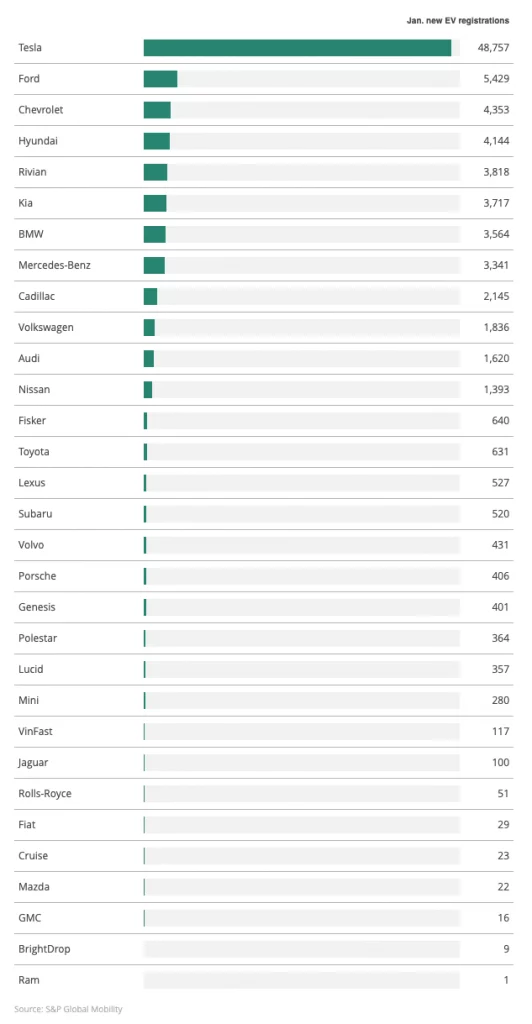In the dawn of the new year, amidst the quiet streets and the subtle hum of electric vehicles (EVs) cruising by, something interesting was happening in the U.S. The numbers were in, and they told a story of growth, albeit at a more subdued pace than before.
January marked a 15% increase in EV registrations compared to the same month last year, a significant shift from the rapid acceleration we’ve seen in the past. It’s like watching a young sapling grow; the progress is undeniable, yet it requires patience and keen observation to truly appreciate the journey.
January Shows EVs Gaining Ground Slowly with a 15% Rise (PDF)
Understanding the Shift
To dive deeper into what this 15% increase means for the EV market, let’s look at the numbers more closely. January’s growth, while still positive, signals a cooling trend compared to the blazing 52% gain in new registrations we witnessed last year, according to data from S&P Global Mobility.
Electric vehicles snagged 7.8% of new U.S. light-vehicle registrations in January, up from 7.1% in the same month last year. For the full year of 2023, EVs had carved out 7.7% of the market, a jump from 5.7% in 2022. These numbers are more than just statistics; they’re a snapshot of the evolving landscape of American transportation.
A Closer Look at the Brands
The story becomes even more fascinating when we break down the January results across different brands:

Tesla continued to lead the pack, mirroring the segment’s overall growth with a 15% increase in registrations. However, not all brands enjoyed the same level of success. Ford and Chevrolet saw declines year over year, while Rivian, Hyundai, Kia, Mercedes-Benz, and Cadillac posted some of the biggest gains among the top 10 EV makers.
Challenges and Opportunities
The journey of electric vehicles into the mainstream is not without its bumps. The U.S. market is in a phase of transition, moving from early adopters to mainstream buyers who are more cautious, particularly about the higher prices of EVs compared to gasoline-powered vehicles and the availability of charging stations.
There’s a silver lining, though. Growing EV inventories have pushed automakers to cut prices over the past year, albeit not enough to achieve parity with gasoline-powered cars. With EVs priced nearly 19% above mainstream vehicles, the price premium remains a significant hurdle.
Moreover, the EV landscape is getting richer and more diverse. More than 80 electric models were available in the U.S. market last year, with many in the luxury segments. But the horizon is broadening with more mainstream EVs slated for release in 2024, including models like the Chevrolet Equinox EV, Honda Prologue, and Volkswagen ID Buzz.
The Road Ahead
As we look forward, the EV market in the U.S. is at a crossroads. The slowdown in growth is a critical moment for reflection and recalibration for automakers. Yet, the continued rise in registrations, even at a slower pace, underscores a steady shift towards a more sustainable future on wheels.
The question now is, how will the industry and consumers alike adapt to these changes to keep the momentum going?






